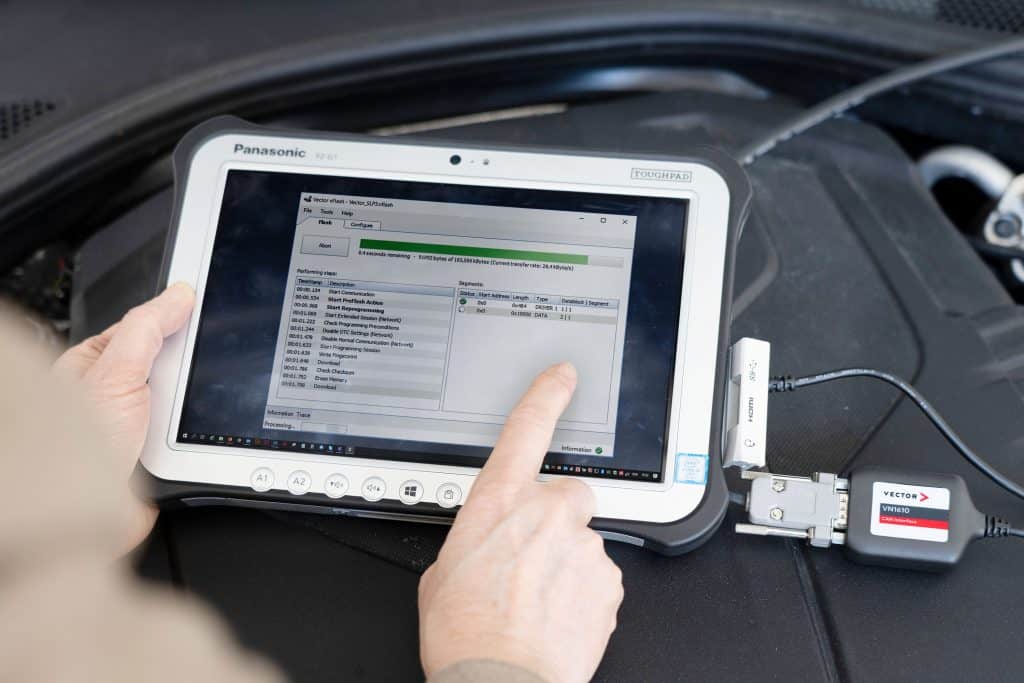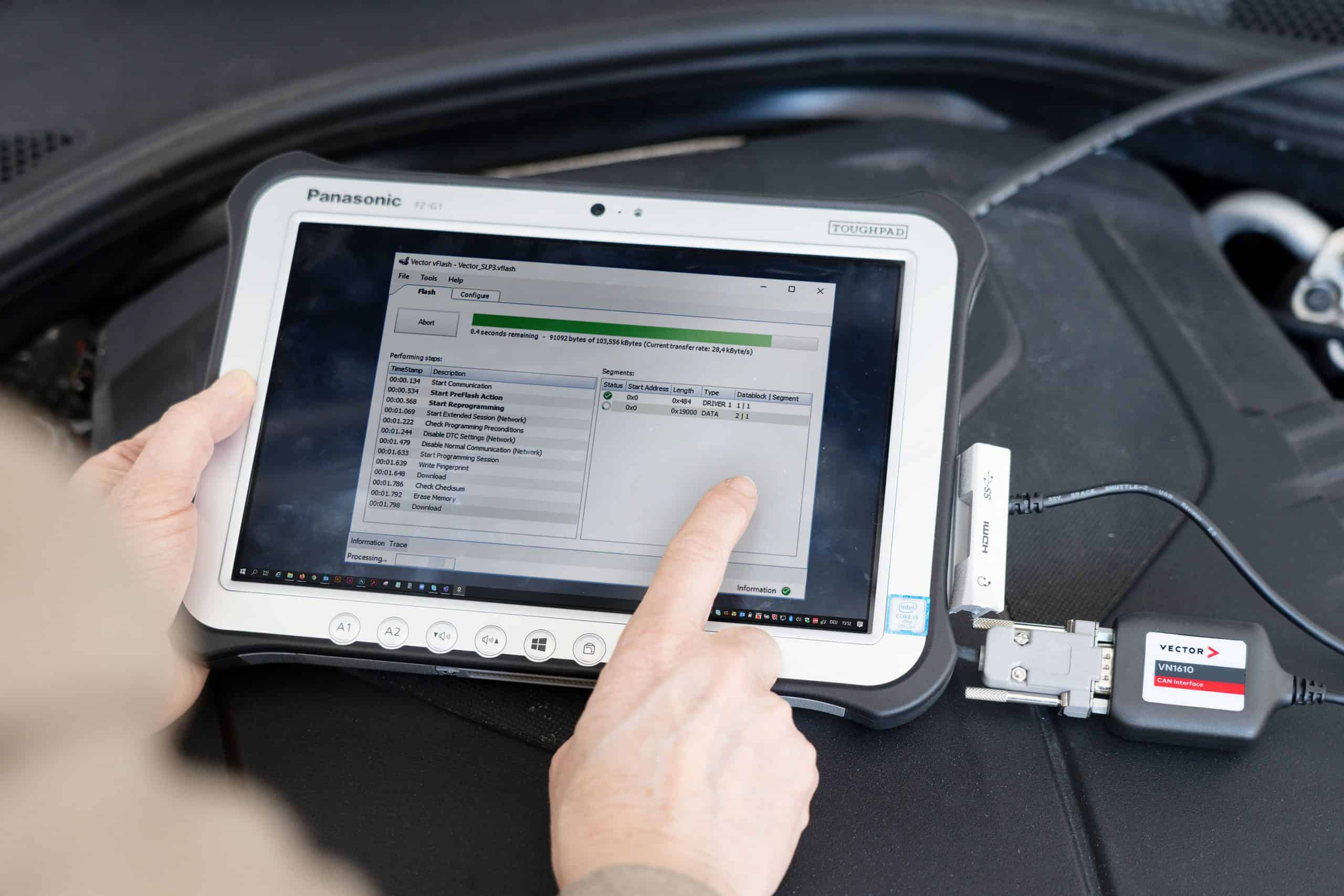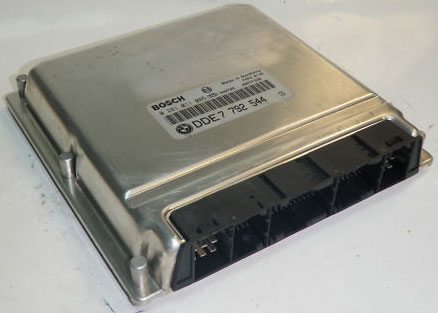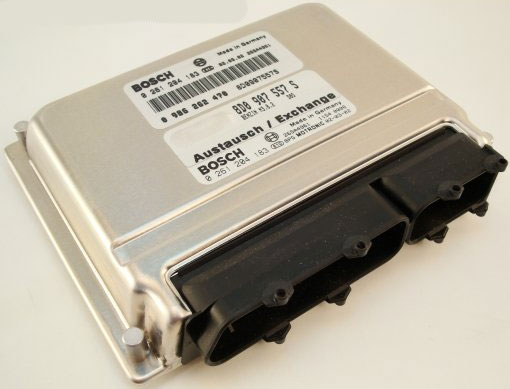In the modern age of automotive engineering, Electronic Control Units (ECUs) reign as the brains behind the brawn. These small yet powerful devices manage and monitor various vehicle functions, from engine performance to safety systems. However, like any sophisticated technology, ECUs are not immune to glitches and malfunctions. This is where ECU diagnostic techniques come to the rescue, unveiling the secrets of automotive health. In this blog, we’ll take a deep dive into the world of ECU diagnostics, exploring its significance, methods, and cutting-edge technologies shaping its evolution.

The Significance of ECU Diagnostics
Imagine you’re driving down the highway, and suddenly, the “Check Engine” light illuminates your dashboard. This small indicator light can indicate a multitude of potential issues. Is it a minor glitch, or a sign of a major problem lurking under the hood? This is where ECU diagnostics play a pivotal role. These techniques allow mechanics and technicians to delve into the intricate digital realm of your vehicle, deciphering the messages encoded by its ECUs.
Read more: Understanding And Resolving The Mercedes EZS EIS Ignition Switch Problem: Causes And Solutions
ECU diagnostics offer a host of benefits:
Accurate Issue Identification: Instead of relying solely on educated guesswork, ECU diagnostics provide accurate insights into the root cause of a problem. This reduces the likelihood of misdiagnoses and unnecessary repairs.
- Time and Cost Efficiency: With the ability to pinpoint specific issues, mechanics can quickly identify the required repairs or replacements. This not only saves time but also reduces the overall cost of maintenance.
- Preventive Maintenance: ECU diagnostics enable technicians to catch potential problems before they escalate into major issues. This proactive approach helps in preventing breakdowns and costly repairs.
Unveiling the Techniques
ECU diagnostic techniques encompass a wide array of methods, each catering to different aspects of a vehicle’s functionality. Here are some of the most commonly used techniques:
1. On-board diagnostics (OBD)
On-board diagnostics, commonly known as OBD, is a standardized system that monitors the performance of a vehicle’s major systems. The most prevalent version, OBD-II, introduced in the 1990s, enabled standardized diagnostics across different manufacturers. OBD-II-equipped vehicles have a port that allows external devices to communicate with the ECU, retrieving valuable data such as trouble codes, sensor readings, and emissions information.
2. Scan Tools
Scan tools are handheld devices or software applications used by mechanics to interface with a vehicle’s ECU. These tools retrieve diagnostic trouble codes (DTCs) stored in the ECU’s memory, which indicate specific issues with different systems. Advanced scan tools can also provide real-time data from various sensors, helping technicians diagnose problems that might not trigger DTCs.
3. Telematics and Remote Diagnostics
Modern vehicles often come equipped with telematics systems that allow remote communication between the vehicle and a central server. This enables manufacturers and service providers to monitor vehicle health, diagnose problems remotely, and even initiate software updates over the air. Telematics can significantly improve the efficiency of diagnosing and addressing issues.
4. Data Logging and Analysis
For complex and intermittent issues, data logging becomes invaluable. Mechanics use specialized tools to record various sensor data while the vehicle is in operation. This data is then analyzed to identify patterns or abnormalities that might indicate underlying problems.
5. Oscilloscopes and Multimeters
For electrical and sensor-related problems, oscilloscopes and multimeters are essential tools. An oscilloscope can graphically display electrical waveforms, helping technicians identify irregularities in signals from sensors and actuators. Multimeters are used to measure voltage, current, and resistance in various circuits.
The Future of ECU Diagnostics
As technology continues to advance, so does the realm of ECU diagnostics. Here are some trends and technologies shaping the future of this field:
1. AI and Machine Learning
Artificial Intelligence (AI) and Machine Learning (ML) are being integrated into diagnostic tools to enhance accuracy and efficiency. These technologies can analyze large datasets, identify subtle patterns, and provide more insightful diagnostics.
2. Predictive Analytics
With the help of historical data and AI algorithms, predictive analytics can forecast potential issues before they even occur. This allows vehicle owners and fleet managers to take preemptive measures, reducing downtime and maintenance costs.
3. Cybersecurity Considerations
As vehicles become more connected, ensuring the security of ECU diagnostics becomes paramount. Manufacturers are investing in cybersecurity measures to prevent unauthorized access and potential hacks that could compromise vehicle safety.
4. Cloud-Based Diagnostics
Cloud computing can offer real-time diagnostic capabilities by leveraging the processing power of remote servers. This can lead to faster and more accurate diagnostics, especially for complex problems.
5. Integrated Diagnostics
Future diagnostic systems aim to integrate various aspects of vehicle health, including mechanical, electrical, and software diagnostics. This holistic approach provides a comprehensive view of a vehicle’s condition.
FAQs
1. Why is ECU diagnostics important?
ECU diagnostics are crucial for identifying and resolving issues within a vehicle’s systems. They provide accurate insights into the root causes of problems, leading to efficient and cost-effective repairs.
2. How does OBD-II work?
On-board diagnostics (OBD-II) is a standardized system that monitors the performance of a vehicle’s major systems. It uses sensors to collect data, and when a problem is detected, it stores a Diagnostic Trouble Code (DTC) in the ECU’s memory. Mechanics can retrieve these codes using a scan tool to diagnose the issue.
3. What are scan tools?
Scan tools are handheld devices or software applications that interface with a vehicle’s ECU. They retrieve DTCs, provide real-time sensor data, and enable technicians to diagnose and troubleshoot issues accurately.
4. How does telematics contribute to ECU diagnostics?
Telematics systems allow remote communication between a vehicle and a central server. This enables manufacturers and service providers to monitor vehicle health, diagnose problems remotely, and even update software over the air, improving the efficiency of diagnostics.
5. What is data logging, and how is it used for diagnostics?
Data logging involves recording sensor data and other relevant information while a vehicle is in operation. Mechanics can then analyze this data to identify patterns or abnormalities that may indicate underlying problems, especially intermittent issues that are hard to replicate.
6. How are AI and machine learning used in ECU diagnostics?
AI and machine learning analyze large datasets to identify patterns and trends that may not be easily discernible by humans. These technologies enhance diagnostic accuracy, especially for complex issues, by learning from historical data and improving over time.
7. What is predictive analytics in ECU diagnostics?
Predictive analytics uses historical data and AI algorithms to forecast potential issues before they occur. This proactive approach helps vehicle owners and fleet managers take preemptive measures, reducing downtime and maintenance costs.
8. How do cloud-based diagnostics work?
Cloud-based diagnostics leverage remote servers’ processing power to analyze real-time data from a vehicle. This can lead to faster and more accurate diagnostics, particularly for complex problems that require extensive computational resources.
9. What are the cybersecurity considerations in ECU diagnostics?
As vehicles become more connected, ensuring the security of ECU diagnostics is crucial to preventing unauthorised access and potential hacking. Manufacturers implement cybersecurity measures to safeguard vehicle systems and data.
10. How do oscilloscopes and multimeters contribute to ECU diagnostics?
Oscilloscopes graphically display electrical waveforms, helping technicians identify irregularities in signals from sensors and actuators. Multimeters measure voltage, current, and resistance in circuits, aiding in diagnosing electrical and sensor-related issues.
11. What is the future of ECU diagnostics?
The future of ECU diagnostic techniques involves the integration of AI, predictive analytics, cloud-based systems, and holistic approaches to vehicle health. These advancements will further enhance accuracy, efficiency, and the overall driving experience.
12. Can vehicle owners perform ECU diagnostics?
Vehicle owners are capable of performing some fundamental diagnostics, such as reading DTCs using OBD-II scan tools. However, complex issues and in-depth diagnostics often require specialised knowledge and equipment, best left to trained technicians.
13. How often should I perform ECU diagnostics on my vehicle?
Regular diagnostics are advisable, especially when the “Check Engine” light or other warning signs appear. Additionally, scheduled maintenance and servicing often include diagnostic checks to ensure the vehicle’s health.
14. Are ECU diagnostic techniques limited to internal vehicle systems?
No, ECU diagnostic techniques can also extend to external components like tyres, brakes, and suspension systems. Some advanced systems can monitor tyre pressure, brake pad wear, and other external factors for enhanced safety and performance.
Read more: Enhancing Performance through ECU Repairs: Unveiling the Power Within
In conclusion, ECU diagnostic techniques play an integral role in ensuring the health and performance of modern vehicles. From the foundational OBD systems to cutting-edge AI-driven diagnostics, these techniques continue to evolve, enhancing accuracy, efficiency, and the overall driving experience. As technology progresses, we can expect the automotive industry to uncover even more secrets hidden within the intricate digital networks of our vehicles.


